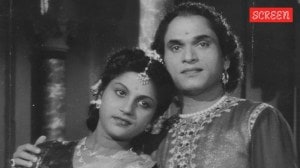Bengali film-maker recreates Staines killing
BHUBANESHWAR, JUNE 3: Even as pre-filming publicity blitz lands filmmakers in troubled waters', renowned director Buddhadeb Dasgupta quie...

BHUBANESHWAR, JUNE 3: Even as pre-filming publicity blitz lands filmmakers in troubled waters’, renowned director Buddhadeb Dasgupta quietly completed the shooting of his film Uttara in a remote Purulia village drawing inspiration from the killing of Australian missionary Graham Staines and his two sons in Orissa last year.
The high priest of parallel cinema strikes right at the heart of religious fundamentalism sweeping the social fabric and the callous and jingoistic response to it. To drive home his point, he is not afraid to depict the grisly incident of burning alive Staines and his two sons in Manoharpur village of Orissa, albeit with a different storyline and with the flavour of his trademark, non-narrative poetic style.
Dasgupta, who shot his film in picturesque Purulia, far from the bustle of city and civilization, says, “The film is based on a contemporary subject. But far from highlighting intolerance and brutality, it is more a story of innocence and simplicity.”
In Dasgupta’s celluloid village, live two men who endlessly pursue their favourite pastime, wrestling, to beat their overwhelming loneliness. The tribal-dominated village has a Christian pastor who ministers to his small group of converts and attends on the patients in a nearby leprosy colony as medicine-man. A group of dwarfs pass through the village every morning and a troupe of traditional folk dancers show up every now and then, lending a blend of music and variety to the otherwise quaint world of dormant violence.
Chinks appear in this serene world when one of the friends, Balaram (Shankar Chakrabarty) marries beautiful Uttara (Assamese actress Jaya Sil) destroying the hitherto exalted relationship with pal Nemai (Tapas Paul) as the two naive friends’ joyous grappling on the mudbed turns into a violent fight over the woman.
The tension between the two friends becomes a metaphor of the ugliness in the outer world as a group of Hindu fundamentalists set out to exterminate the padree baba (priest). The film culminates with the most diabolic murder of the pastor, torching of the church, a mindless killing of a dwarf train guard and rape and murder of Uttara (the only private eye and voice of protest) by the zealots as the two men callously wrestle for the woman, oblivious to the destruction around them.
The undercurrent of hatred in the film is captured by Dasgupta through the surreptitious entrance of a viper amid the green undercover during the fall of leaves in the deciduous wood, third in the series each depicting a distinct episode.
Fundamental to the film, the filmmaker says, is the remoteness of the setting. “While in the big cities of India and the West, people talk about globalisation and the world becomes increasingly smaller, in many parts of this developing world illiterate, ignorant and superstitious people live a vibrant life with the capacity to love and suffer despite their shortcomings as modern man,” he said.
Dasgupta further cites intolerance as the catalyst in precipitating the degeneration from peace to destruction and calls it “a dialectic that is universal’. He, however, signs off on a positive note with Matthew, the little boy adopted by the priest, turning away from the wrestlers he so admired and joining the dancing troupe.
“I made this film in response to the present day realities and also to warn against the impending dangers. In this world of eternal tension between beauty and ugliness we must strive to preserve the former. The optimistic ending is thus not only artistically appropriate but also a statement of faith”, he says.
Dasgupta, a three-time national award winner, however, found it difficult to get the film rolling. With producers reluctant to finance a film treading on dangerous grounds, he got the film produced with Swiss assistance.





- 01
- 02
- 03
- 04
- 05


























